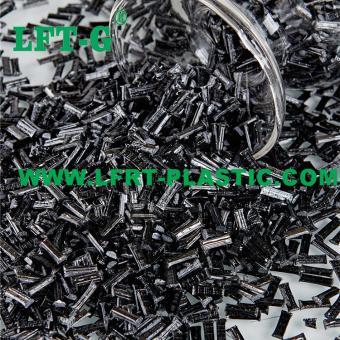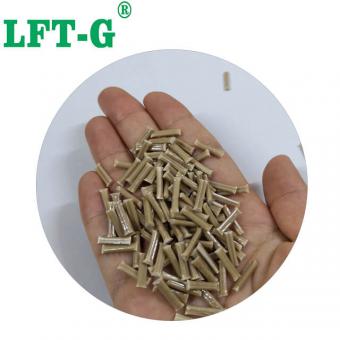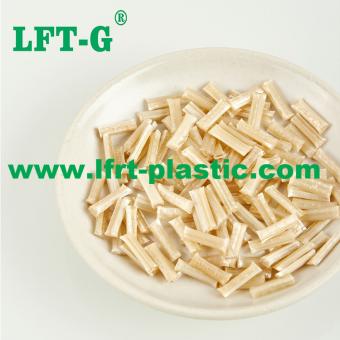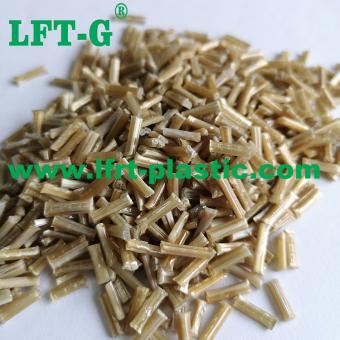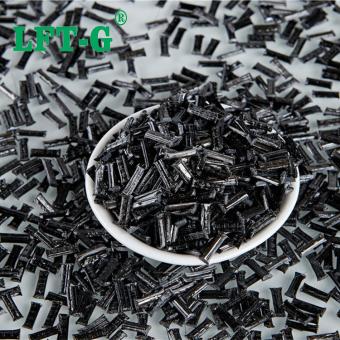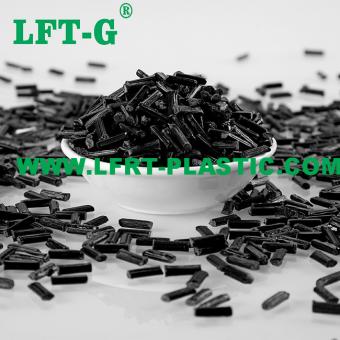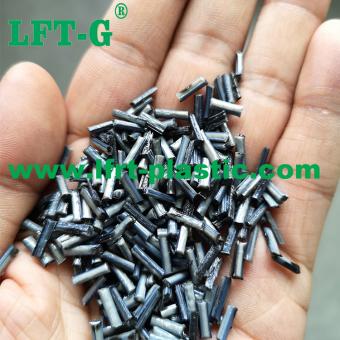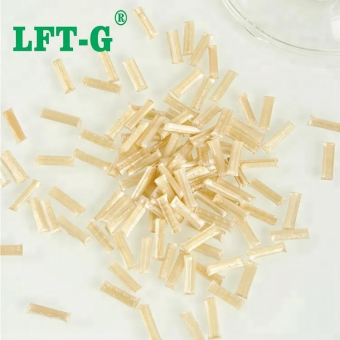-
Poly(phenylene sulfide) PPS Toughness long carbon fiberLong carbon fiber Reinforced Poly(phenylene sulfide) PPS was prepared by impregnating and melting long carbon fiber with Poly(phenylene sulfide) PPS.
- Toughness Polyphenylene sulfide
- PPS reinforced
- Thermoplastics of long fiber reinforced
- PPS Polyphenylene sulfide Modified pps compound
- Engineering plastic materials PPS
Tags :
-
PPS Poly polyphenylene sulfide PPS injection UV-ResistantPolyphenylene sulfide PPS is a new type of high performance thermal resin resin modified material
- PPS long glass fiber
- Modified PPS granules
- factory in Xiamen thermoplastics
- Polyphenylene sulfide PPS
- Industrial PPS pellets
- pps reinforced thermoplastic
Tags :
-
PPS raw material filled long glass fiber lgf 40% high toughness car parts and other filedWhat is PPS? PPS has a symmetrical rigid backbone and is part of a crystalline polymer consisting of repeated parapplacement of benzene rings and sulfur atoms. PPS are special engineering plastics with high performance, high melting point up to 280℃, which can replace metal. They are located at the top of the polymer property pyramid, as shown in Figure 1. Therefore, based on the excellent performance of PPS resin, make it meet the requirements of harsh engineering plastic projects for materials. Why filling long glass fiber? Long glass fiber reinforced plastic is on the basis of the original pure plastic, adding glass fiber and other additives, so as to improve the scope of use of materials. Advantages: 1. After glass fiber reinforcement, glass fiber is a high temperature resistant material, therefore, the heat resistance temperature of reinforced plastics is much higher than before without glass fiber, especially nylon plastics; 2. After glass fiber reinforcement, due to the addition of glass fiber, limited the mutual movement between polymer chains of plastics, therefore, the shrinkage rate of reinforced plastics decreases a lot, rigidity is greatly improved; 3. After glass fiber reinforcement, the reinforced plastic will not stress crack, at the same time, the anti-impact performance of plastic is improved a lot; 4. After glass fiber reinforcement, glass fiber is a high strength material, which also greatly improves the strength of plastic, such as: tensile strength, compression strength, bending strength, improve a lot; 5. glass fiber reinforced after, due to the addition of glass fiber and other additives, the combustion performance of reinforced plastics decreased a lot, most of the material can not ignite, is a kind of flame retardant material. Datasheets for your reference Performance advantages include the following aspects: excellent heat resistance, good mechanical properties, corrosion resistance, self-flame retardant up to UL94 V-0 level. Because PPS has the advantages of the above properties, and compared with other high performance thermoplastic engineering plastics and has the characteristics of easy processing, low cost, so it becomes an excellent resin matrix for manufacturing composite materials. Details Color Original or as required Length Above 5~24mm MOQ 25kg Package 25kg a bag Port of Loading Xiamen Port Delivery time 7~15 days after shipment
- Polyphenylene sulfide composite
- long glass fiber compound pps
- LFT-G brand plastic
- LGF PPS reinforced material
- Injection grade PPS
- pellets of plastic pps
Tags :
-
LFT-G PPS Polyphenylene sulfide LGF composite long glass fiber customized color engineering plasticsWhat is the PPS? Polyphenylene sulfide (PPS) is a new thermoplastic resin with high performance. By filling, modified with excellent high temperature resistance, corrosion resistance, wear resistance, flame retardant, balanced physical and mechanical properties and excellent dimensional stability and excellent electrical properties and other characteristics of the new high performance thermoplastic resin, as well as high mechanical strength, chemical resistance, flame resistance, good thermal stability, excellent electrical properties and other advantages. It has the advantages of hard and brittle, high crystallinity, inflammability, good thermal stability, high mechanical strength, excellent electrical properties, strong chemical corrosion resistance and so on. The mechanical properties of pure PPS are not high, especially the impact strength is relatively low. Good creep resistance under load, high hardness; High wear resistance, the wear at 1000 RPM is only 0.04g, and will be further improved after filling F4 and molybdenum disulfide; It also has a certain degree of self-moistening. The mechanical properties of PPS are less sensitive to temperature. What is the PPS-LGF? PPS is one of the best varieties of heat resistance in the engineering plastic department. The thermal deformation temperature of the material modified by glass fiber is generally greater than 260 degrees, and the chemical resistance is second only to PTFE. In addition, it also has small shrinkage, low water absorption, good fire resistance. Good resistance to vibration fatigue, strong resistance to arc, especially at high temperature. Excellent electrical insulation in high humidity. But its disadvantages are brittleness, toughness, low impact strength, after modification, can overcome the above shortcomings, obtain very excellent comprehensive performance. As a plastic, its properties and uses far exceed those of ordinary plastics, and in many ways it is as good as metal materials. Excellent material PPS has the advantages of high temperature corrosion resistance, excellent mechanical properties, can replace metal including stainless steel, copper, aluminum, alloy, etc., is considered to be the best substitute for metal, copper. What is the application of PPS-LGF? PPS is now widely used in automotive, aerospace, household appliances, mechanical construction and chemical industry for a variety of structural parts, transmission parts, insulation parts, corrosion resistant parts and seals. Under the condition of ensuring sufficient strength and other properties, the weight of the product is greatly reduced. Datasheet for reference Details Number Color Length MOQ Package Sample Delivery time Port of Loading PPS-NA-LGF30 Original color (can be customized) 5-25mm above 25kg 25kg/bag Available 7-15 days after shipment Xiamen Poer Production process Trademarks and patents Teams and customers We will offer you: 1. LFT & LFRT material technical parameters and leading edge design 2. Mold front design and recommendations 3. Provide technical support such as injection molding and extrusion molding.
- PPS Long glass fiber 40
- pps compounds lgf
- pps resin materials lft
- lft-g pps reinforced plastic
- long glass fiber filling pps
- termoplastic resin pps lgf
Tags :
-
LFT-G PPS Polyphenylene sulfide composite long carbon fiber injection mold thermoplastic resin high toughnessPPS material In recent years, the application of special engineering plastics has gradually extended from the previous military and aerospace fields to more and more civil fields, such as automotive, equipment manufacturing, high-end consumer goods, etc.. Among them, polyphenylene sulfide (PPS) and polyether ether ketone (PEEK) are two special engineering plastics that have developed relatively quickly and have a wide range of applications. PEEK is superior to PPS in terms of strength, toughness, and maximum operating temperature. In terms of high-temperature resistance, PEEK is about 50°C higher than PPS. But on the other hand, the relatively obvious cost advantages and better processing properties of PPS make it more widely used. PPS is a crystalline, highly rigid white powder polymer, high heat resistance (long-term use of 200 ℃ -220 ℃, short-term can withstand high temperatures of 260 ℃), is a mechanical strength, rigidity, flame retardant, chemical resistance, electrical properties, dimensional stability are excellent resin. It has excellent wear resistance, creep resistance, flame retardancy and self-extinguishing properties. It maintains good electrical properties at high temperature and high humidity. Good flowability, easy to mold, almost no shrinkage and concave spot when molding. Good affinity with various inorganic fillers. It has been developed to shorten the difference between standard thermoplastic materials (e.g. PA, POM, PET ......) and advanced engineering plastics. PPS has the following distinct performance advantages: (1) Intrinsically Flame Retardant Unlike PC and PA, PPS pure resin and its glass fiber/mineral powder filled composites without any added flame retardants 可以轻松达到V-0@0.8mm甚至更薄厚度的V-0阻燃级别. Although PC and PA have a cheaper price and better mechanical strength (especially impact strength) than PPS, the cost of PC and PA composites with the addition of halogen-free flame retardant formulations (V-0@0.8mm级别) is significantly higher, in many cases even higher than PPS materials with the same mechanical strength. (2) Ultra-high flowability For the semi-crystalline PPS, its very high fluidity can allow glass fiber filling easily more than 50 %, while in the process of high-temperature melt blending extrusion, PPS compared to PC lower viscosity can make the glass fiber to withstand a lower degree of shear and extrusion, so that the final injection molded products have a longer retention length, to further enhance the effect of modulus. (3) Ultra-low water absorption This advantage is mainly for PA. In terms of fluidity, highly filled PA and PPS are comparable; and for mechanical properties, the same amount of filling PA composites will be more advantageous. But in addition to the halogen-free flame retardant limitations, another factor limiting the application of PA is its high water absorption: compared to high-temperature nylon PA6T 0.6%-1% water absorption, PPS 0.03% water absorption rate is almost negligible. The result is that PPS products due to water absorption and deformation of the product defect rate is much lower than the same conditions of PA products. (4) the unique metallic texture and higher surface hardness PPS injection molded parts will be dropped on the table, a very crisp sound unique to PPS crash. Through the special mold and reasonable mold temperature with the PPS injection molded parts in the human touch will also sound similar to the impact of metal, the surface will be as smooth as a mirror, with a metal-like luster. PPS-LCF compounds Length: About 12mm, or customized Color: Original color, or customized Fiber specification: 20%-60% Grade: General grade Long carbon fiber reinforced composites offer significant weight savings and provide optimum strength and stiffness properties in reinforced thermoplastics. The excellent mechanical properties of long carbon fiber reinforced composites make it an ideal replacement for metals. Combined with the design and manufacturing advantages of injection molded thermoplastics, long carbon fiber composites simplify the re-imagining of compoents and equipment with demanding performance requirements. Its widespread use in aerospace and other advanced industrials makes it a "high-tech" perception of consumers. Datasheet for reference Application Factory Q & A 1. Is there a uniform reference data for carbon fiber product performance? The performance of specific carbon fiber filaments is fixed, such as Toray's carbon fiber filaments, T300, T300J, T400, T700, etc. There are a series of parameters that can be traced. However, there is no uniform standard to measure the carbon fiber composite products. Firstly, the different models of raw materials selected will lead to different performance of the products, and then the different selection of substrate and product design will lead to different performance of the products. In addition to some common carbon fiber tube, carbon fiber plate and other conventional parts, most of th...
- PPS long carbon fiber injection
- PPS reinforced plastic LCF
- LFT-G PPS resin cf
- raw material pps with filler cf
- automotive parts plastic pps toughness
- black color pps fill long fiber
Tags :
-
LFT-G PPS composites filling long carbon fiber thermoplastic resin natural black color high rigidity for factoryPPS-LCF In carbon fiber composites, carbon fiber reinforced PPS can be said to be a very promising new material, its mechanical properties, corrosion resistance, self-flame retardant and other aspects of the performance is good, so it is often used as a matrix material for various types of high-performance composite materials. The mechanical properties of carbon fiber reinforced polyphenylene sulfide are also affected by the carbon fiber content, under a certain threshold, the larger the carbon fiber content, the stronger the ability to bear external loads. Application Through the reinforcing intervention of carbon fibers, the toughness and strength of polyphenylene sulfide PPS can be substantially increased and improved, becoming one of the most commonly used composites in the aerospace field. Compared with metal, carbon fiber reinforced PPS has the advantages of low cost and easy processing, and the cost can be reduced by 20%-50%. Used in landing gear, wings, doors, fuel tank covers, J-type nose cones, cabin trim and other parts of the aircraft, it not only helps to increase the impact resistance, high temperature resistance and corrosion resistance of these parts, but also improves the load efficiency of the aircraft and reduces fuel consumption by reducing the quality. The most representative application example is the carbon fiber reinforced polyphenylene sulfide composite material for the leading edge of the wing of Airbus A340/A380 aircraft. Datasheet Carbon fiber reinforced PPS production products, with a fast molding, easier to mass production; carbon fiber reinforced PPS with environmental standards, but also able to be used twice, in the production of the entire product as well as the processing of solvents and additives do not need to be introduced, so it can reduce or even a certain degree of avoiding environmental pollution, but also thermoplastic products, unlike thermosetting composite materials can not be reused after the molding of the product, under certain temperature conditions, it has the possibility of recycling, regeneration and reuse. Moreover, unlike thermoset composite products that cannot be reused after molding, thermoplastic products have the possibility of recycling and reuse under certain temperature conditions. In addition, relative to thermoset products, thermoplastic composite products molding speed to be faster, shorter manufacturing cycle, which is conducive to reducing the cost of products. Other materials you may wonder PPA-LCF PEEK-LCF PA12-LCF Tests & Certifications Customers & Us Frequently asked questions 1. Is there a unified reference data for carbon fiber product performance? The performance of specific carbon fiber filaments is fixed, such as Toray's carbon fiber filaments, T300, T300J, T400, T700 and so on, there are a series of parameters can be traced. However, there is no uniform standard to measure the carbon fiber composite products. Firstly, the different types of raw materials selected will lead to different performance of the products, and then due to the choice of matrix and the different design of the products, it will lead to different performance of the products. In addition to some common carbon fiber tubes, carbon fiber boards and other conventional parts, most of the carbon fiber products in the production of the sample before the test to determine whether the performance of the product is in line with the use of the expected standard, and as a base point, so as to carry out the production and use of large quantities. 2. Are carbon fiber composite products expensive? The price of carbon fiber composite products is closely related to the price of raw materials, the level of technology and the quantity of products. Some products of the industrial environment requirements are high, the performance of carbon fiber products and materials have special requirements, which requires the selection of specific raw materials, raw materials, the higher the performance of the natural price of the more expensive, such as the application of orthopedic carbon fiber PEEK thermoplastic materials. Of course, the more complex the production process, the greater t...
- Injection molded PPS reinforced plastic
- PPS made in China LCFR
- raw material pps with filler cf high performance
- Long carbon fiber Reinforced PPS for electrial accessories
- Instead metals materials PPS high performance
- thermoplastic resin PPS with fiber
Tags :
-
LFT-G PEEK high quality modified materials fill long carbon fiber for automotives good performanceThroughout the plastics industry, PEEK is widely recognized as a leading high performance polymer (HPP). However, the preferred material in the automotive, aerospace, oil and gas, and medical device industries has long been metal, and PEEK polymers are rapidly changing that mindset. What is the PEEK material PEEK or Polyetheretherketone belongs to the class of polymers known as "aromatic polyketones" (more accurately Polyaryletherketone or PAEK). Research and development of PEEK began in the 1960s, but it wasn't until 1978 that Imperial Chemical Industries (ICI) patented PEEK, and Victrex PEEK polymer was first commercialized in 1981. "Aromatic" usually implies a distinctive or sweet flavor, which may seem like an odd term, but scientists use it to describe certain molecules that contain or consist of a cyclic structure (such as the aryl unit above). Small molecules of this type, such as toluene and naphthalene, have distinctive odors and hence the name. However, PEEK itself, like most thermoplastics, is odorless under normal conditions. Chemically, PEEK is primarily a linear semi-crystalline polymer. P comes from the Greek word "poly" meaning "many", so many EEKs form PEEK. aryl and ketone groups provide stiffness by being somewhat rigid, which means good mechanical properties and a high melting point. The ether group provides a degree of flexibility, while the aryl and ketone groups are chemically inert and thus chemically resistant. The regular structure of the repeating units means that the PEEK molecule can be partially crystallized and the crystallinity provides properties such as wear resistance, creep resistance, fatigue resistance and chemical resistance. The resulting polymer is widely recognized as one of the best performing thermoplastics in the world. Compared to metals, PEEK-like materials are lightweight, easy to mold, corrosion-resistant, and have a fairly high specific strength (strength per weight). Datasheet for reference When high performance is required, PEEK as the polymer of choice offers more than just two or three properties, it offers a wide range of excellent properties including: - High heat resistance Testing has shown that LFT-G's PEEK polymer has a continuous use temperature of 260°C (500°F). This allows for a wide range of applications in hot corrosive environments such as the process industry, oil and gas industry, and the engines and transmissions of countless vehicles.PEEK resists friction and wear in dynamic applications such as thrust washers and seals. - Chemically Inert PEEK resists damage caused by chemically corrosive working environments such as downhole environments in the oil and gas industry, and gears in mechanical and automotive applications. It is resistant to jet fuels, hydraulic fluids, de-icers and pesticides used in the aerospace industry for a wide range of pressures, temperatures and time frames. - Strong mechanical properties PEEK exhibits excellent strength and stiffness over a wide range of temperatures, and the specific strength of PEEK-like carbon fiber composites is many times higher than that of metals and alloys. "Creep" is the permanent deformation of a material under constant stress over a period of time. "Fatigue" is the brittle destruction of a material under repeated cyclic loading. Because of its semi-crystalline structure, PEEK has high creep and fatigue resistance and is more durable than many other polymers and metals over a long service life. - Does not ignite or burn easily PEEK has excellent flame resistance, with an ignition temperature of nearly 600°C. Even when ignited at very high temperatures, it does not burn continuously and emits little smoke. This is one of the reasons why PEEK is widely used in commercial aircraft. - Reprocessable and recyclable PEEK molecules are so stable that they can be melted and reprocessed time and time again with minimal impact on their properties. This helps to improve the environmental footprint and ensures more efficient reuse of waste materials generated during the manufacturing process. - And there's more! PEEK is also non-hygroscopic, so its properties are not altered in wet environments; it is resistant to gamma and electron beam radiation and is transparent under X-ray exposure, making it attractive for medical device applications.PEEK is also electrically stable and is typically used as an electrical insulator, but can be modified to become a conductor or static dissipative material. As a thermoplastic PEEK, it can be injection molded, compression molded and extruded using conventional thermoplastic processing equipment. It is very versatile and its use is becoming more and more common to improve component performance, durability, reduce weight and lower overall system costs over its lifetime. There is no doubt that it is replacing metals and alloys. In many industries and critical environments, material specialists, part designers and buyers must choose between PEEK and traditional metals a...
- High performancePEEK fiiler lcf
- Injection molded PEEK good price
- composite plastic peek black color
- made in China peek reinforced materials
- aerospace automotive parts plastic
- Low warpage PPS reinforced long carbon fiber
Tags :
-
LFT-G PPS Polyphenylene sulfide LGF composite long glass fiber customized engineering plasticsWhat is the PPS? Polyphenylene sulfide (PPS) is a new thermoplastic resin with high performance. By filling, modified with excellent high temperature resistance, corrosion resistance, wear resistance, flame retardant, balanced physical and mechanical properties and excellent dimensional stability and excellent electrical properties and other characteristics of the new high performance thermoplastic resin, as well as high mechanical strength, chemical resistance, flame resistance, good thermal stability, excellent electrical properties and other advantages. It has the advantages of hard and brittle, high crystallinity, inflammability, good thermal stability, high mechanical strength, excellent electrical properties, strong chemical corrosion resistance and so on. The mechanical properties of pure PPS are not high, especially the impact strength is relatively low. Good creep resistance under load, high hardness; High wear resistance, the wear at 1000 RPM is only 0.04g, and will be further improved after filling F4 and molybdenum disulfide; It also has a certain degree of self-moistening. The mechanical properties of PPS are less sensitive to temperature. What is the PPS-LGF? PPS is one of the best varieties of heat resistance in the engineering plastic department. The thermal deformation temperature of the material modified by glass fiber is generally greater than 260 degrees, and the chemical resistance is second only to PTFE. In addition, it also has small shrinkage, low water absorption, good fire resistance. Good resistance to vibration fatigue, strong resistance to arc, especially at high temperature. Excellent electrical insulation in high humidity. But its disadvantages are brittleness, toughness, low impact strength, after modification, can overcome the above shortcomings, obtain very excellent comprehensive performance. As a plastic, its properties and uses far exceed those of ordinary plastics, and in many ways it is as good as metal materials. Excellent material PPS has the advantages of high temperature corrosion resistance, excellent mechanical properties, can replace metal including stainless steel, copper, aluminum, alloy, etc., is considered to be the best substitute for metal, copper. What is the application of PPS-LGF? PPS is now widely used in automotive, aerospace, household appliances, mechanical construction and chemical industry for a variety of structural parts, transmission parts, insulation parts, corrosion resistant parts and seals. Under the condition of ensuring sufficient strength and other properties, the weight of the product is greatly reduced. Datasheet for reference Details Number Color Length MOQ Package Sample Delivery time Port of Loading PPS-NA-LGF30 Original color (can be customized) 5-25mm above 25kg 25kg/bag Available 7-15 days after shipment Xiamen Poer Production process Trademarks and patents Teams and customers We will offer you: 1. LFT & LFRT material technical parameters and leading edge design 2. Mold front design and recommendations 3. Provide technical support such as injection molding and extrusion molding.view more
-
LFT-G PPS Polyphenylene sulfide composite long glass fiber customized engineering plasticsWhat is the PPS? Polyphenylene sulfide (PPS) is a new thermoplastic resin with high performance. By filling, modified with excellent high temperature resistance, corrosion resistance, wear resistance, flame retardant, balanced physical and mechanical properties and excellent dimensional stability and excellent electrical properties and other characteristics of the new high performance thermoplastic resin, as well as high mechanical strength, chemical resistance, flame resistance, good thermal stability, excellent electrical properties and other advantages. It has the advantages of hard and brittle, high crystallinity, inflammability, good thermal stability, high mechanical strength, excellent electrical properties, strong chemical corrosion resistance and so on. The mechanical properties of pure PPS are not high, especially the impact strength is relatively low. Good creep resistance under load, high hardness; High wear resistance, the wear at 1000 RPM is only 0.04g, and will be further improved after filling F4 and molybdenum disulfide; It also has a certain degree of self-moistening. The mechanical properties of PPS are less sensitive to temperature. What is the PPS-LGF? PPS is one of the best varieties of heat resistance in the engineering plastic department. The thermal deformation temperature of the material modified by glass fiber is generally greater than 260 degrees, and the chemical resistance is second only to PTFE. In addition, it also has small shrinkage, low water absorption, good fire resistance. Good resistance to vibration fatigue, strong resistance to arc, especially at high temperature. Excellent electrical insulation in high humidity. But its disadvantages are brittleness, toughness, low impact strength, after modification, can overcome the above shortcomings, obtain very excellent comprehensive performance. As a plastic, its properties and uses far exceed those of ordinary plastics, and in many ways it is as good as metal materials. Excellent material PPS has the advantages of high temperature corrosion resistance, excellent mechanical properties, can replace metal including stainless steel, copper, aluminum, alloy, etc., is considered to be the best substitute for metal, copper. What is the application of PPS-LGF? PPS is now widely used in automotive, aerospace, household appliances, mechanical construction and chemical industry for a variety of structural parts, transmission parts, insulation parts, corrosion resistant parts and seals. Under the condition of ensuring sufficient strength and other properties, the weight of the product is greatly reduced. Datasheet for reference Details Number Color Length MOQ Package Sample Delivery time Port of Loading PPS-NA-LGF30 Original color (can be customized) 5-25mm above 25kg 25kg/bag Available 7-15 days after shipment Xiamen Poer Production process Trademarks and patents Teams and customers We will offer you: 1. LFT & LFRT material technical parameters and leading edge design 2. Mold front design and recommendations 3. Provide technical support such as injection molding and extrusion molding.view more

 e-mail
e-mail English
English français
français Deutsch
Deutsch русский
русский italiano
italiano español
español português
português العربية
العربية 日本語
日本語 한국의
한국의 中文
中文












